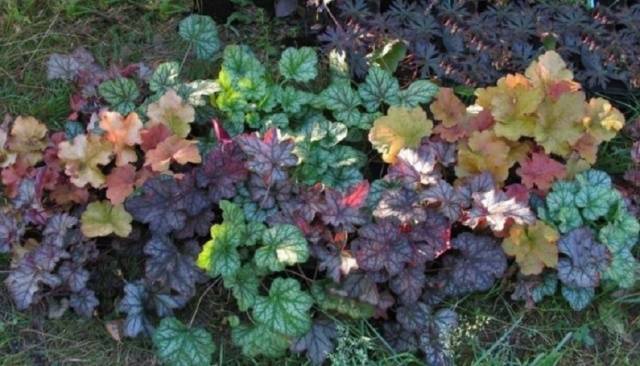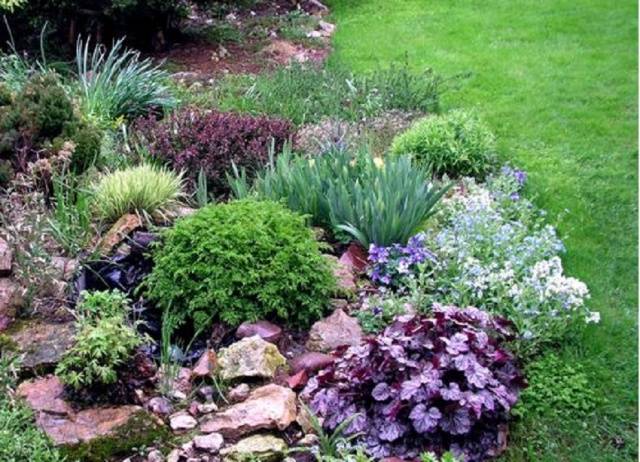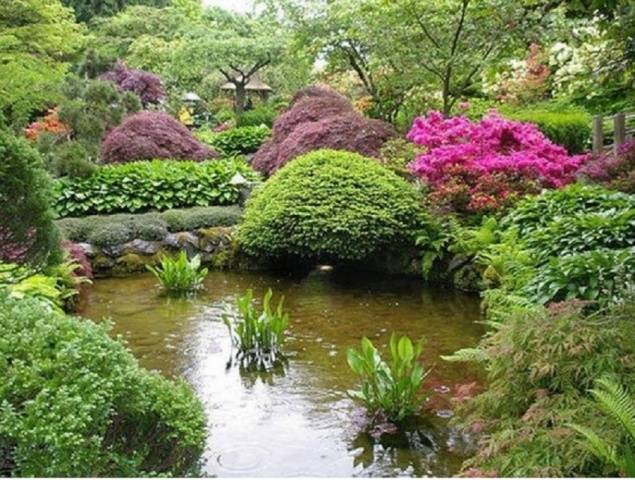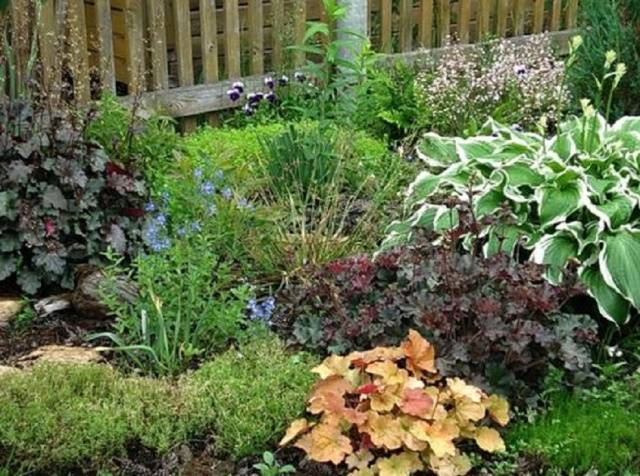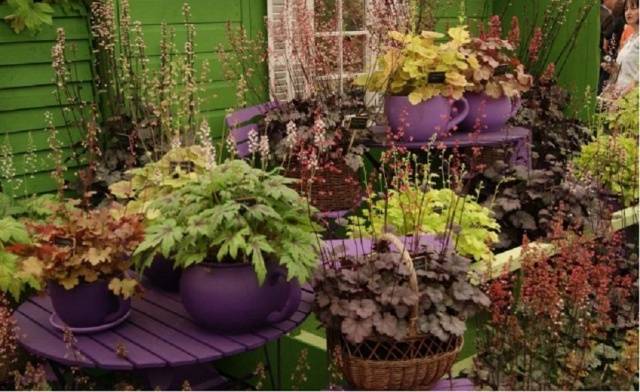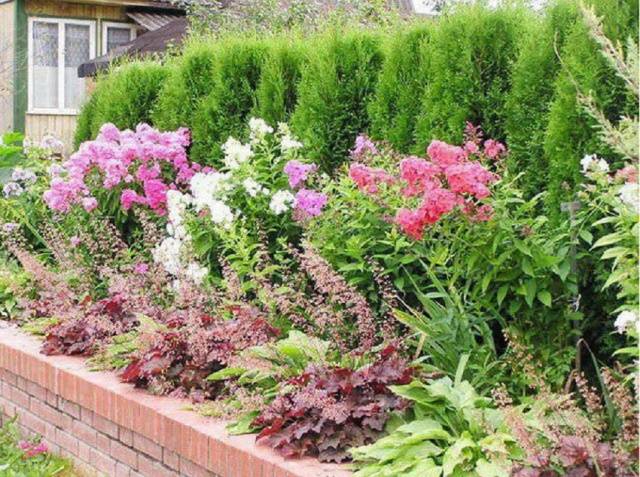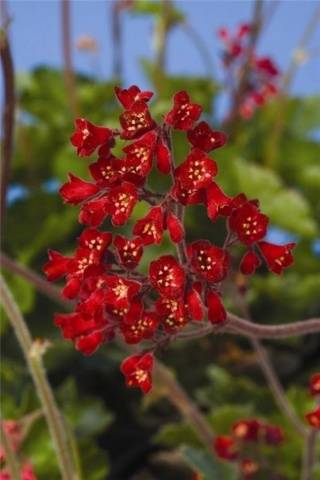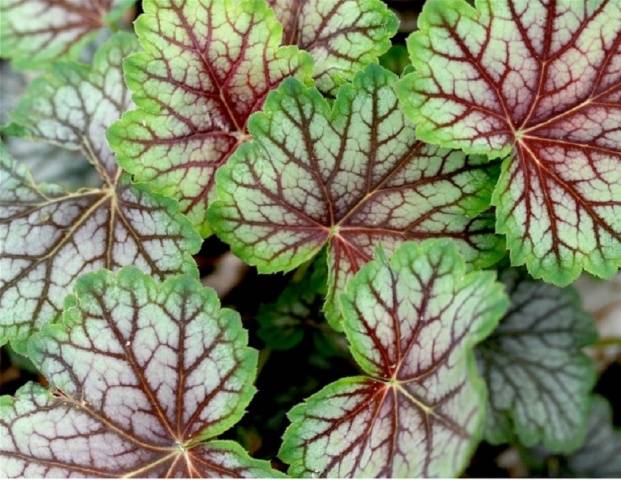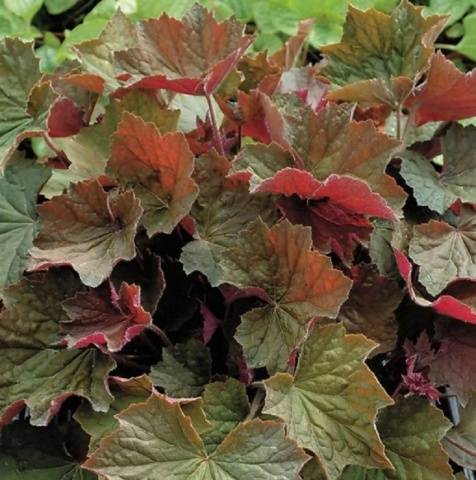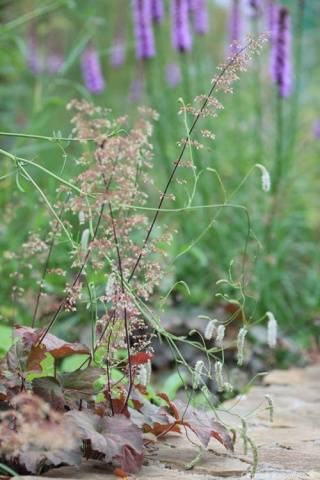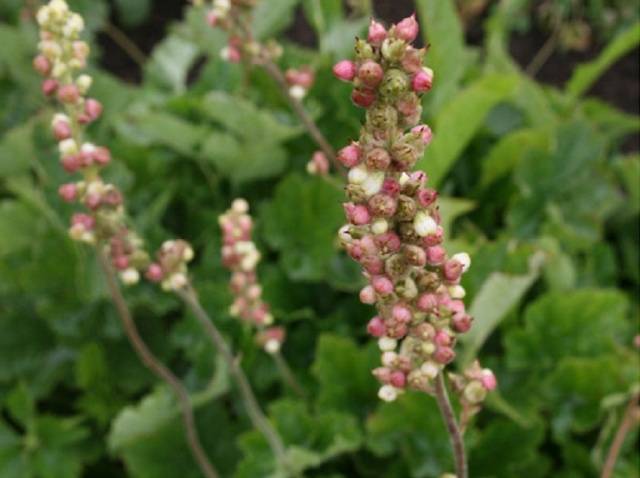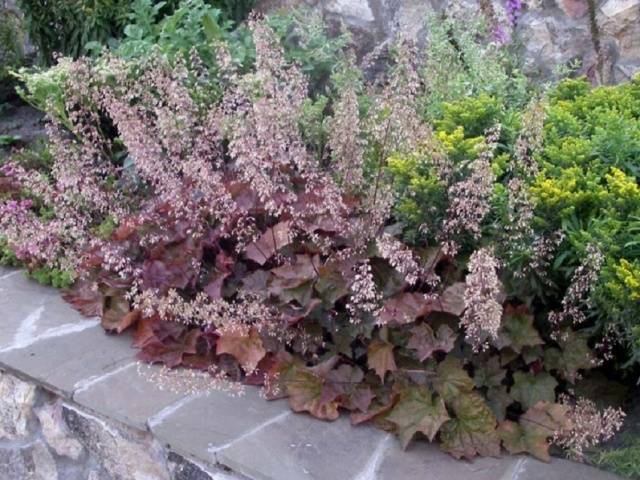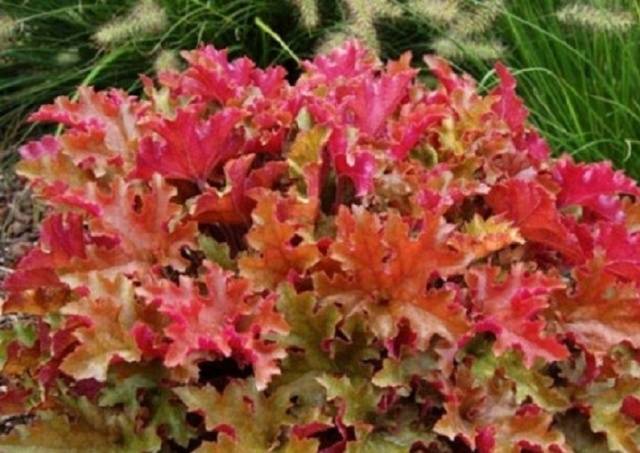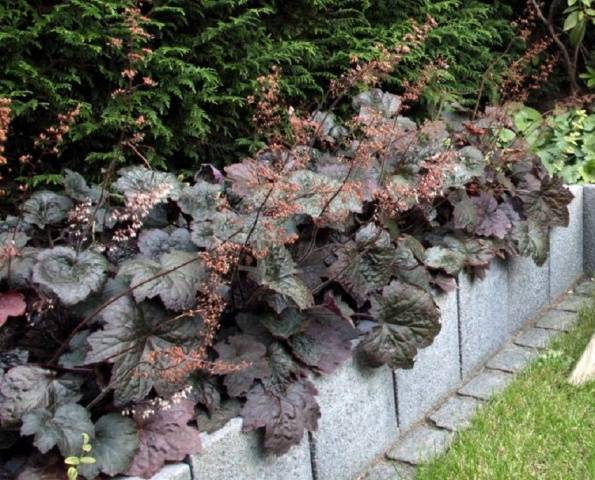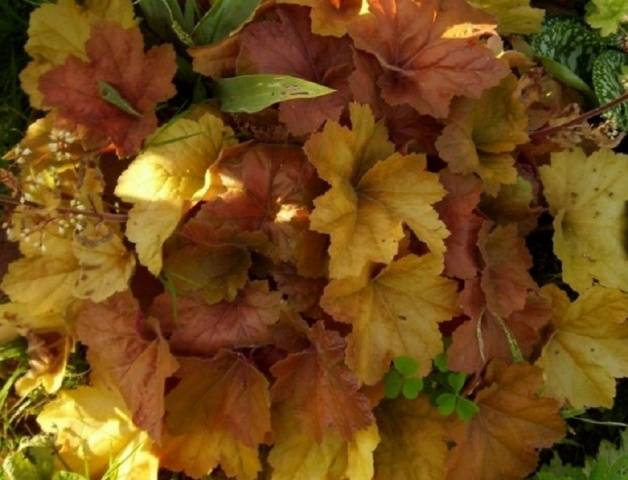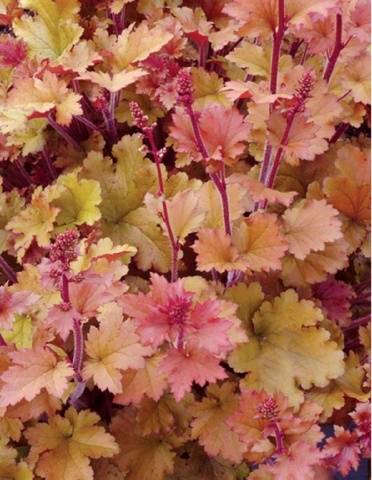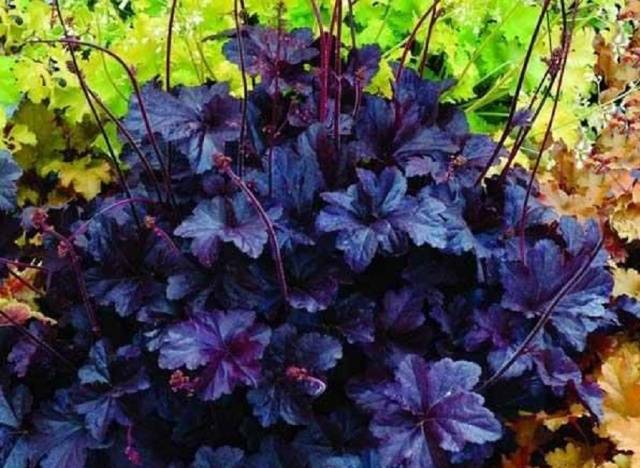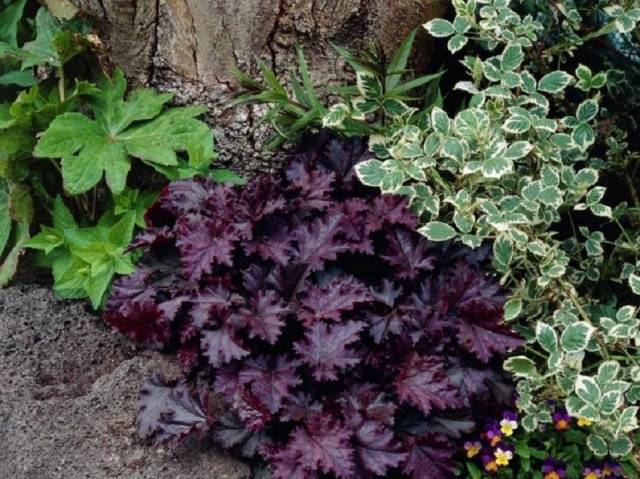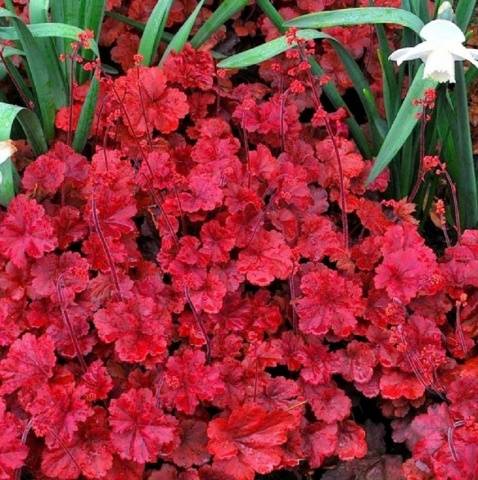Content
The landscape design of the site depends on many factors. Summer residents have to take into account climatic features, soil composition, time and financial capabilities. The main goal remains the beauty of the site throughout the year. Therefore, plant selection is an important part of planning. One of the most popular types of decorative perennials, which is often used for landscape design, is Heuchera.
The main advantage of heuchera is the variety of shades of jagged leaves, the ability not to lose decorativeness from early spring to late autumn. There are over 70 varieties that fit perfectly into a variety of landscaping projects. You can create an original zone using only combinations of heuchera leaves. All plant varieties are divided into mountain and forest.
It would be more correct to say that heuchera in landscape design is able to create a unique composition and save time.
Heuchera is appreciated by designers for the ability:
- create a bright accent against the background of garden greenery;
- provide decorative appeal throughout the season;
- take root well in containers;
- adapt to any degree of illumination;
- tolerate cold and climatic fluctuations well;
- reproduce easily and quickly;
- resist disease;
- do not require careful and professional care;
- get along with other plants in any combination;
- grow near water bodies and on stone compositions.
In addition, a huge selection of varieties and an excellent view on any plan, allows you to use Heuchera in landscape design in the foregrounds, in rock gardens, rockeries and multi-tiered flower beds.
Ideas using Heuchera in landscape design
Heuchera is a low flower.
But the leaves create such an attractive look that the flower will come in handy anywhere. Leaf shades range from green to white. In between, you can find brown, gray, purple, red, silver, cream.
The color is not always monochromatic; there are representatives with stripes, specks, spots. The saturation of the color depends on the heating and illumination of the plant.
Heuchera flowers are also popular in landscape design. They are smaller and more numerous, similar to bells with different coloration. The plant blooms in the summer, at the very beginning and continues to bloom until the end of the season. As soon as the "bells" have faded, the stems are cut off. The bush is very compact, neat with leaves of various textures and shapes. There are varieties with smooth leaves, corrugated, curly.
Original ideas on how to use a flower in projects can be found in various sources. Geichera in landscape design is able to create such a colorful composition that the photos of ideas are striking in their variety.
It will perfectly fill the empty space or make a harmonious calm transition from one plant to another with the help of unique leaves.
Separately planted Heuchera will play the role of an accent in landscape design or, conversely, mask the void in the flower bed during the entire flower period.
Having picked up varieties according to the color scheme, you can perfectly decorate the problem area.
Most importantly, the beauty of Heuchera does not depend on the weather. In cold and hot weather, it equally gives fabulousness with its lush and dense bushes.
Heuchera is ideally combined in landscape design with other plants and elements of rock garden, rockery, stone buildings.
Planted in decorative flowerpots and containers, it will perfectly decorate a terrace, gazebo or patio.
In landscape design, due to the strict shape and neatness of the bushes, it also serves to create borders. In near-trunk areas, in group plantings and as a tapeworm, Heuchera definitely wins.
In the landscape design of the site, heucheru, as a colorful addition, can be combined with almost any type of plant.
She will get along next to atsilba and bruner, chrysanthemums and ornamental grasses, daylilies and hosts, irises, geraniums, primrose, sedium or ferns. In these combinations, it can play the role of balance in a large saturated color palette of a flower bed. In another case, with its unique duet of form and color, it will help slightly dilute the concentration of bright colors.
Popular representatives of Heuchera
In landscape design, the ability of a plant to change the shade of its leaves during the flowering period is highly valued. At first they are lighter, at the end they become much darker. Therefore, the garden is always beautiful. Often, summer residents use heuchera leaves to decorate their home furnishings. They are combined with various autumn-colored leaves and placed in a vase. What types are most often used in landscape design?
Blood red
Refers to mountain varieties, very hardy and unpretentious. It is the ancestor of many modern varieties. The second name is coral bell. A bush with very dense leaves, circular and toothed. Landscaping often uses a look with cream or white spots on the leaves. The flowers of the blood-red heuchera are small pink or red bells.
They have medicinal properties.
American
Forest view. Also has a second name - mountain geranium. Loves shade and nutritious soil. American Heuchera flowers have a beautiful yellow-green color. In landscape design, it is valued for its original heart-shaped leaves with a mauve color at the bottom.
Hairy
Refers to forest species. A feature of this variety are velvety large leaves and fluffy flower stalks. The flowers are very delicate shades - pink, creamy green.
Cylindrical
This type of mountain geyher is much larger than the rest. A silvery pattern is visible on the green, heart-shaped leaves. It got its name from the shape of the inflorescence. The flowers are also large and collected in a cylinder-like shape.
There are many varieties of this variety of Heuchera, each with a peculiar shade of flowers.
Small-flowered
The favorite kind of landscape designers. They consider her to be the most spectacular of the Heucheras. The leaves are reminiscent of maple leaves, and the colors are very unusual. For example, bronze or purple, some have silvery spots. The flowers are small, expressive creamy pink with orange anthers.
Hybrid
The name itself suggests that this variety of geyher is of a mixed type. In landscape design, they use the entire palette of possible shades and forms of leaves, which are rich in hybrid heuchera. Flowers also have different colors, so the popularity of the plant is very high.
Gooseberry-leaved
This heuchera has a small leaf size. They can be five-bladed or three-bladed, but always assembled into an outlet. Stems are long, 60 cm high, ending in large white flowers.
The listed varieties are divided into many varieties that are successfully used in landscape design. Let's take a look at the most common ones:
Caramel
It justifies its name by the honey-yellow color of the leaves. And the light pink flowers complement the sweet picture.
Marmalade
The leaves are light purple on the inside, and yellow-orange on top. A very beautiful variety with small greenish flowers.
Black bird
Luscious maroon leaves will give a nice touch to your garden landscaping. Sometimes the color reaches a black hue and resembles the wings of a raven.
Purple castle
This variety is suitable for lovers of stricter forms. Ivy-shaped leaves with a dark purple color are very effectively combined with cream bells.
Cherry Cola
Here is a combination of red-brown leaf tones and pink flowers. This variety can decorate any flower arrangement.
It is important not only to choose the right variety, but also to provide competent plant care. Only in this case, the geyher will be a unique addition to the landscape design of the site.
How to grow Heuchera without problems
The main criterion for the healthy appearance of Heuchera in landscape design projects is the correct planting site. The plant loves partial shade and protection from the wind. However, some varieties prefer good lighting. Before creating a composition, you should familiarize yourself with the requirements of certain types. Most of the flower representatives are unpretentious to weather conditions and soil type, but it is better to plant Heuchera on a drained nutrient soil. This is due to the fact that with stagnant water, the roots can rot and the plant will die.
Winter hardiness of a plant depends on the health of the roots. In order for the growth of the root system to be uniform, it is necessary to spud heuchera once a year. And after 5 years, the bushes are transplanted.
It is dug up, divided into parts and seated. This procedure must be done in the spring before the plant has time to release new shoots and leaves. Mulching with oak leaves helps geychers to winter well. Leaves cannot be cut off for the winter, otherwise the plant will not survive.
Heuchera are propagated by dividing the bushes, seeds and cuttings. For inexperienced gardeners, it is best to purchase a ready-made plant in order to avoid difficulties with sowing. Moreover, grown from seeds, Heuchera do not always fully possess the characteristics of the variety.
The main pests that can cause trouble are slugs and snails. If prevention is carried out on time, then problems will not arise.
The main reasons for the weakening of heuchera are considered to be an excess of organic nutrients, moisture, or increased acidity of the soil. But for summer residents, these are simple questions. Therefore, geychers are ubiquitous in the landscape design of sites. With age, the plant retains its original shape, therefore, in landscape design, it is used to create geometric strict forms.
Do not be afraid to make a mistake in choosing a place. She will take the transplant painlessly, and you can find the best option. Geuchera in landscape design is combined with almost any plant and harmoniously fits into any style.
